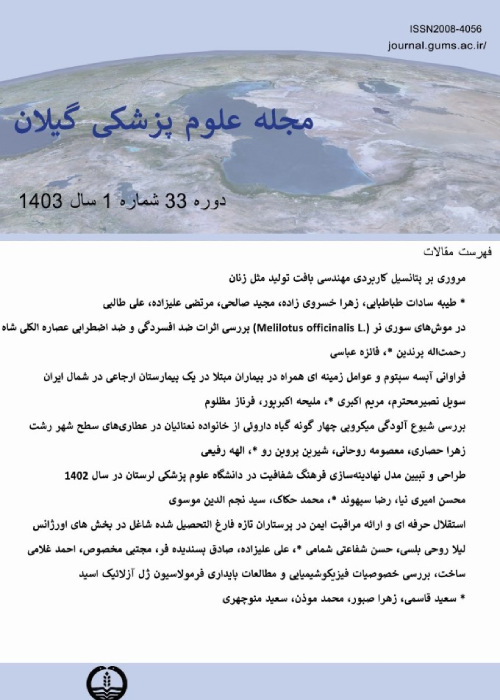Isolation and Molecular Typing of Wolbachia Pipientis from two Species of Phlebotomus caucasicus and Phlebotomus mongolensis Sandflies
Author(s):
Abstract:
Introduction
In Iran, zoonotic cutaneous leishmaniasis (ZCL) is an endemic disease in many foci in the northeastern, southern, and central parts of the country. This disease goes through the geographical distributions along with dispersion in their reservoirs (gerbils) and their vectors (sandflies). Therefore, controlling the vectors or reservoirs has a significant role in prevention of Leishmania parasites which is transmitted by sandflies. Nowadays, because of vectors implications, the routine methods of controlling and spraying has no more useful effects on vectors and reservoirs. Consequently, in recent years maternally inherited intracellular Rickettsia like bacteria (Wolbachia) has been fascinated by many researchers. Objective
The aim of the present study was to improve our knowledge about detection of two species of Paraphlebotomus sandflies infected with W. pipientis which yet has not been reported in Iran and the world. The new surveys have been conducted in the case of Wolbachia detection in two mentioned ZCL vectors. Materials And Methods
In Turkemen Sahara within the ZCL focus, two species of Phlebotomus caucasicus and Phlebotomus mongolensis sandflies has been frequently collected from eighteen villages. Sticky papers and CDC traps were used to sampling sandflies in rural areas. In the laboratory, sandflies were identified to species by dissecting and mounting genitalia of each sandfly. DNA from sandflies (Thorax and abdomen) was extracted, the wsp gene confirmed for the presence of Wolbachia using wsp general primers (81F/691R). After sequencing, the data were analyzed by molecular software. Results
We examined a total of 136 individuals (91 male and 45 female) from Phlebotomus caucasicus and Phlebotomus mongolensis species; 10 out of 44 positive (32.35%) samples had enough DNA to sequencing. Wolbachia infections have been found and verified for the first time in each of two Phlebotomus caucasicus and Phlebotomus mongolensis species in Iran and the world. In this procedure, 3 haplotypes (2 common Haplotypes and 1 unique Haplotype) of 2 species of Paraphlebotomus subgenus has been recognized in 10 sand flies of Iran. Conclusion
Paraphlebotomus sandflies are the secondary vectors of ZCL after Phlebotomus which play a decisive role in maintaining disease of their reservoirs. Wolbachia provide a starting point for inducing changes in host sex or sexuality. By manipulating Wolbachia as a transgene, it is hoped that these bacteria may be used as a controlling system for decreasing vector-borne-disease.Keywords:
Language:
Persian
Published:
Journal Of Guilan University Of Medical Sciences, Volume:21 Issue: 81, 2012
Page:
62
magiran.com/p1001528
دانلود و مطالعه متن این مقاله با یکی از روشهای زیر امکان پذیر است:
اشتراک شخصی
با عضویت و پرداخت آنلاین حق اشتراک یکساله به مبلغ 1,390,000ريال میتوانید 70 عنوان مطلب دانلود کنید!
اشتراک سازمانی
به کتابخانه دانشگاه یا محل کار خود پیشنهاد کنید تا اشتراک سازمانی این پایگاه را برای دسترسی نامحدود همه کاربران به متن مطالب تهیه نمایند!
توجه!
- حق عضویت دریافتی صرف حمایت از نشریات عضو و نگهداری، تکمیل و توسعه مگیران میشود.
- پرداخت حق اشتراک و دانلود مقالات اجازه بازنشر آن در سایر رسانههای چاپی و دیجیتال را به کاربر نمیدهد.
In order to view content subscription is required
Personal subscription
Subscribe magiran.com for 70 € euros via PayPal and download 70 articles during a year.
Organization subscription
Please contact us to subscribe your university or library for unlimited access!


